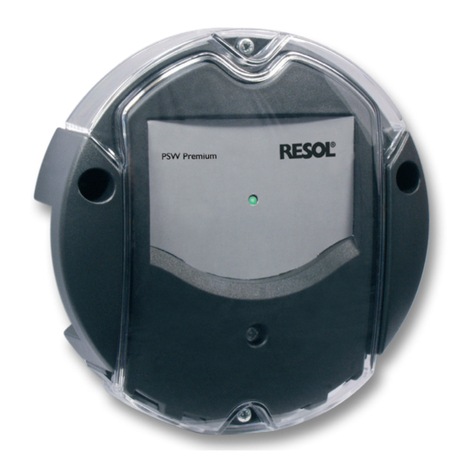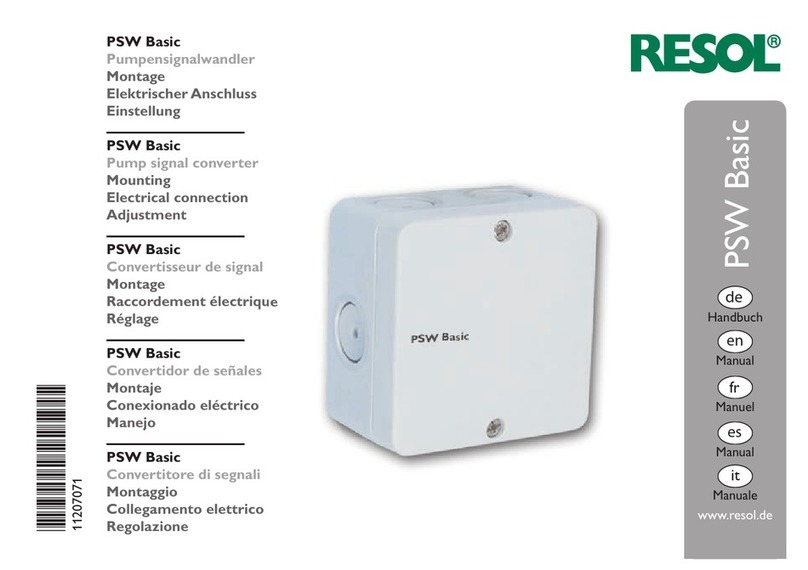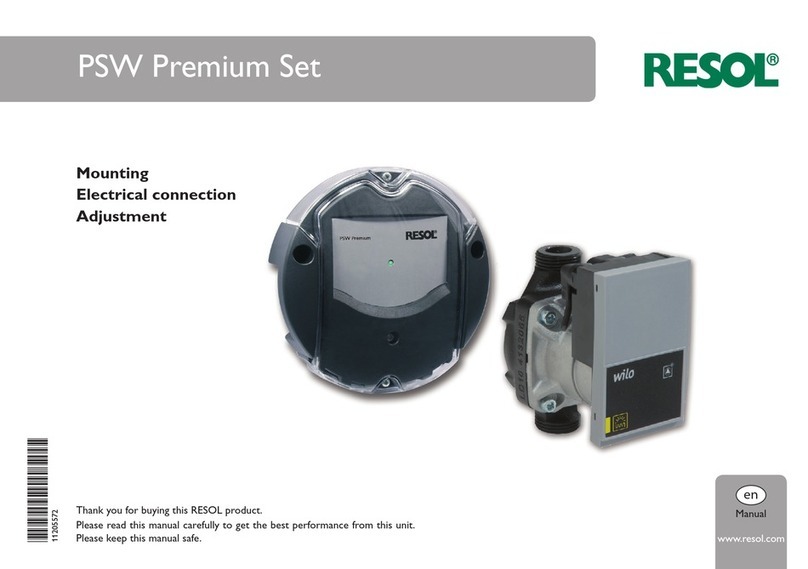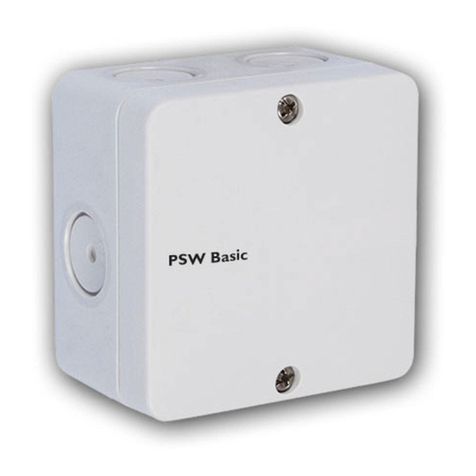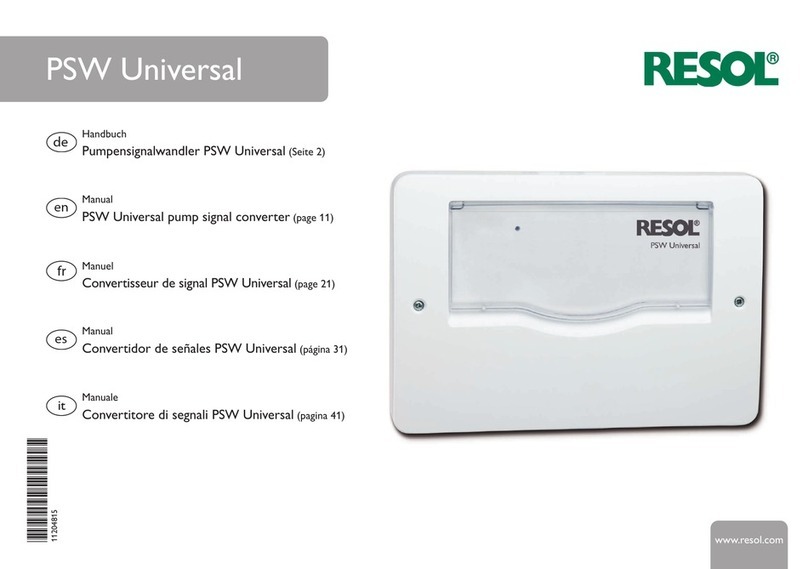
de
2
Vielen Dank für den Kauf dieses RESOL-Gerätes.
Bitte lesen Sie diese Anleitung sorgfältig durch, um die Leistungsfähigkeit dieses
Gerätes optimal nutzen zu können. Bitte bewahren Sie diese Anleitung sorgfältig
auf.
Sicherheitshinweise
Bitte beachten Sie diese Sicherheitshinweise genau, um Gefahren und Schäden für
Menschen und Sachwerte auszuschließen.
Vorschriften
Beachten Sie bei Arbeiten die jeweiligen, gültigen Normen,Vorschriften und Richt-
linien!
Angaben zum Gerät
BestimmungsgemäßeVerwendung
Das Gerät ist für den Einsatz in thermischen Heizungs- und Solarsystemen un-
ter Berücksichtigung der in dieser Anleitung angegebenen technischen Daten be-
stimmt.
Die bestimmungswidrige Verwendung führt zum Ausschluss jeglicher Haftungs-
ansprüche.
CE-Konformitätserklärung
Das Produkt entspricht den relevanten Richtlinien und ist daher mit
der CE-Kennzeichnung versehen. Die Konformitätserklärung kann beim
Hersteller angefordert werden.
Hinweis:
Starke elektromagnetische Felder können die Funktion des Geräts beein-
trächtigen.
ÎSicherstellen, dass Gerät und Anlage keinen starken elektromagneti-
schen Strahlungsquellen ausgesetzt sind.
Zielgruppe
Diese Anleitung richtet sich ausschließlich an autorisierte Fachkräfte.
Elektroarbeiten dürfen nur von Elektrofachkräften durchgeführt werden.
Die erstmalige Inbetriebnahme hat durch den Ersteller der Anlage oder einen von
ihm benannten Fachkundigen zu erfolgen.
Symbolerklärung
WARNUNG! Warnhinweise sind mit einem Warndreieck gekennzeichnet!
ÎEs wird angegeben, wie die Gefahr vermieden werden
kann!
Signalwörter kennzeichnen die Schwere der Gefahr, die auftritt, wenn sie nicht
vermieden wird.
• WARNUNG bedeutet, dass Personenschäden, unter Umständen auch lebens-
gefährliche Verletzungen auftreten können
• ACHTUNG bedeutet, dass Sachschäden auftreten können
ÎTextabschnitte, die mit einem Pfeil gekennzeichnet sind, fordern zu einer
Handlung auf.
Hinweis:
Hinweise sind mit einem Informationssymbol gekennzeichnet.
Entsorgung
• Verpackungsmaterial des Gerätes umweltgerecht entsorgen.
• Altgeräte müssen durch eine autorisierte Stelle umweltgerecht entsorgt wer-
den. Auf Wunsch nehmen wir Ihre bei uns gekauften Altgeräte zurück und ga-
rantieren für eine umweltgerechte Entsorgung.
Irrtum und technische Änderungen vorbehalten.
© 20170807_11204815_PSW_Universal.mon5s_iA.indd

